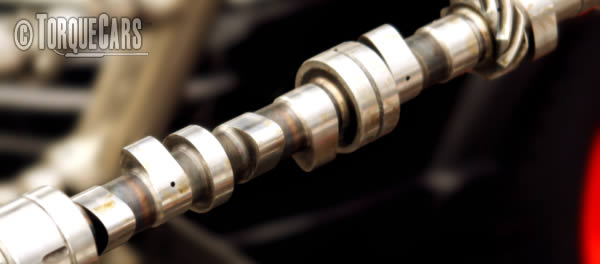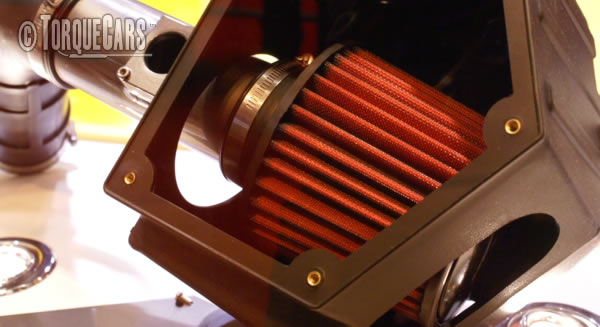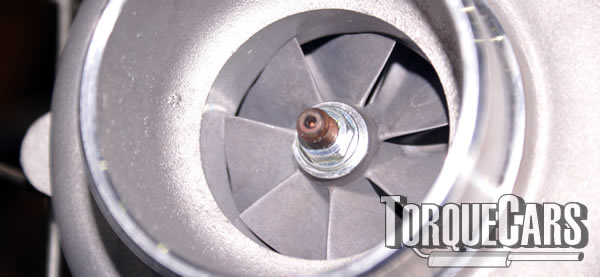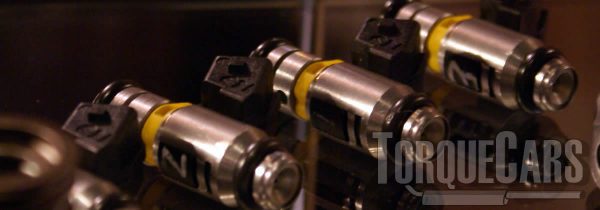Tuning the superb Mitsubishi Evo 4G63T engine.
"Evolving the Evo 4G63T "
History, Power & Specs of the Engine
The EVO is without a doubt one of the most rewarding and easy to drive performance cars around as many TorqueCars members will tell you!
Mitsubishi have managed to get excellent power levels from the 2.0 inline 4 engine.

In the realm of high-performance engines, few carry the legacy and acclaim of the Mitsubishi 4G63T.
Renowned for its turbocharged prowess, this engine has earned its stripes on both the street and the track, leaving an indelible mark on automotive enthusiasts and motorsports aficionados alike.
The 4G63T's claim to fame is deeply rooted in its association with the Mitsubishi Lancer Evolution series, a line of vehicles that has become synonymous with speed, agility, and rally dominance.
This engine, featuring forced induction, has been a driving force behind the Evolution's success on rally circuits, showcasing its capability to deliver exhilarating performance under the most demanding conditions.
As we delve into the world of mods and upgrades, the 4G63T stands out for more than just its impressive stock specifications.
Its turbocharged nature opens up a realm of possibilities for enthusiasts eager to elevate their driving experience.
The aftermarket support for the 4G63T is robust, offering a treasure trove of performance-enhancing components, from turbo kits to advanced tuning solutions.
Whether you're a seasoned tuner looking to extract every ounce of power from this legendary engine or a newcomer eager to explore the potential of your Mitsubishi vehicle, our journey into mods and upgrades for the 4G63T promises to be an exciting adventure.
From the rally stages to the city streets, we'll explore the reliability, versatility, and sheer thrill that the 4G63T engine brings to the world of automotive customization.
Join us as we unlock the full potential of this iconic powerplant, pushing the boundaries of performance and celebrating the enduring legacy of the Mitsubishi 4G63T.
 4 doors makes the EVO a practical proposition for the family, where dad can buy a car that he really wants to drive but still be able to fit the kits & essentials inside comfortably!
4 doors makes the EVO a practical proposition for the family, where dad can buy a car that he really wants to drive but still be able to fit the kits & essentials inside comfortably!
Many tuning specialists and evo performance part suppliers are springing up all over the world. A notable mention has to go to specialist tuning houses which regularly turn out cars running power levels up to 700 bhp (and more).
Newer engines were better than each previous generation so when looking for upgrade and parts to swap always try to source the latest generation engine you can find as a donor.
Best 4G63T mods
Please watch our 4G63 Mods video which covers the basic principles of tuning your 4G63. Be sure to keep up with our latest YouTube content and subscribe.
The optimum modifications on an engine are in our opinion the ones that give the best value for money.
We won't be swayed by popular 4G63T modifications, they need to be cost effective.
Best Engine Mods for your 4G63T
- Engine Tunes - engine tuning/remapping provides the most advantage in terms of cost savings, aftermarket ECUs, and piggyback ECUs are all alternatives.
- Fast road cams are one of the most significant mechanical changes, but they must be installed by someone who knows what they're doing and they are not always easy to source but you might find a local firm to regrind a stock camshaft.
- Intake and Exhaust - Note that on their own these mods will NOT ADD POWER in most cases, but they can help enhance power after other mods by removing the restriction.
- Upgrades to turbochargers and superchargers - forced induction is the most efficient approach to increase air supply, allowing you to burn more fuel and make more power. It is one of the most costly upgrades but provides the best gains.
- Head work - The goals of porting and flowing the head are to get air flowing into the engine while removing flow restrictions and turbulence.
4G63T Camshaft Upgrades
Altering your 4G63T camshaft will make a dramatic difference to the engine torque. Choosing a higher performance camshaft profile raises the torque accordingly.

Fast road camshafts normally increase the performance across the rpm range, you could sacrifice a little low down torque but the high end rpm power will be better.
Interestingly the EVO 6 to EVO 8 from 1999 to 2004 run nearly virtual identical camshaft profiles but the EVO9 in 2005 onwards saw MIVEC Mitsubishi's Innovative Valve Time Electronic Control system which dramatically improved the cam timing significantly and allows the turbo to spool up more quickly due the higher velocity of exhaust gases.
MIVEC to a large degree, if you pardon the pun, negates the need for a performance cam profile, although adding lift may be a goal to those chasing higher power gains from a revised set of pistons or a stroker kit.
When it comes to camshaft upgrades on the 4G63 BC, Camtech, and Crower Cams frequently crop up in 4G63T tuning projects and this usually means you can get away with a larger turbo and not suffer from excessive amounts of lag.
Motorsport camshafts, increase the high end rpm power band but as a result the car will not idle smoothly and low end power nearly always suffers.
On a road car must carefully try to match your torque band to your preferences.
I'd be shocked if you have thought a Motorsport and race cam is a pleasure to live with when driving in heavy traffic.
The low end idle will be very lumpy and irregular, so something you would notice on a track when you drive in the upper third of the rpm band, but on roads this is a serious issue and we've heard from lots of drivers lamenting their decision to add an extreme competition cam profile to their engine.
ECU Tunes/Mapping Upgrades
A tune or remap helps to establish the full potential of all the upgrades you've fitted to your 4G63T.
An aftermarket ECU is the route to take, and many of these will outperform factory ECU's but make sure it has knock protection and that you get it setup properly.
Installing an aftermarket Engine Control Unit (ECU) is a popular choice among 4G63T Tuners & enthusiasts seeking to maximize the gains from their mods.
Aftermarket ECUs provide unparalleled tuning flexibility, allowing precise control over parameters such as fuel injection, ignition timing, and boost pressure.
Beyond enhancing performance, aftermarket ECUs are crucial when implementing significant engine modifications, such as upgrades to the intake and exhaust systems or changes in forced induction components.
Moreover, aftermarket ECUs contribute to improved fuel efficiency through precise fuel injection control. They also offer advanced diagnostic features, aiding in real-time monitoring and troubleshooting of engine-related issues.
Haltech also make a good aftermarket ECU that works well on the 4G63 as do Vipec, Apexi Power FC, Links and Motec. Much depends on your budget and how far you want to push the power gains.
Most of these offer pretty much drop in plug and play conversions with off the shelf wiring looms supplied.
With adaptability to engine swaps and the elimination of factory limitations, aftermarket ECUs provide a comprehensive solution for those looking to customize and future-proof their vehicles.
Please watch our video which covers the 5 principles of tuning your car. Be sure to keep up with our latest YouTube content and subscribe.
Tuning Stages On The 4G63T
Typical stage 1 mods often include: Remaps/Tune via Aftermarket ECU, drilled & smoothed airbox, Fast road camshaft, Intake manifolds, Panel air filters, Sports exhaust header/manifold.
Typical stage 2 mods often include: high flow fuel injectors, induction kit, Fast road cam, Ported and polished head, Sports catalyst & performance exhaust, fuel pump upgrades.
Typical stage 3 mods often include: Twin charging conversions, Competition cam, Adding or Upgrading forced induction (turbo/supercharger), Crank and Piston upgrades to alter compression, Internal engine upgrades (head flowing porting/bigger valves), Engine balancing & blueprinting.
It will usually give you around 20-30% more power easily on the 4G63, but your tuning results will vary depending on the upgrades you've done and the condition of your engine.
Forcing air and fuel into the 4G63T engine is the whole point to any engine upgrade project.
Intake manifolds take the air from the air cleaner and allow it to be drawn into the engine cylinders.
Shape and rate of flow of the Intake manifolds can make a noticeable improvement to fuel atomisation on the 4G63T.
Many mass produced engine intake manifolds are in dire need of a performance upgrade, although some of the recent engines provide decently flowing intake manifolds leaving little scope for improvement.
Going with larger 4G63T intake & exhaust valves, getting 3 or 5 angle valve jobs and porting and head flowing will also lift bhp, the fantastic side effect is it will afford you a greater bhp increase on other mods.

Turbo Upgrades

The TD05HR turbos from the Evo 9, specifically the TD05HR, can be a great upgrade for older engines, offering improved mid-range power response.
Investing in a quality ECU eliminates the need for a separate boost controller. While basic boost control involves on/off settings, introducing more graduated steps enhances response and power delivery.
Starting from the EVO4 in 1996, the TD05 turbo was introduced, featuring a twin-scroll setup to optimize flow characteristics. This setup allows for power levels of around 400hp.
Around the 400hp mark, consider upgrading conrods to maintain reliability.
Additionally, it's crucial to replace hoses and the intercooler, especially in older models, as they can become brittle and fail at higher power levels.
For power in the range of 400 to 500hp, the Garrett GT30 turbo or the MHI TF06R are suitable, typically reaching around 450hp. Injector and fuel upgrades become necessary at this stage.
At 500hp, focus on injector upgrades, with options like the Injector Dynamics ID1050, paired with a GT30r turbo. However, be mindful of engine lubrication and cooling, which become major considerations.
For even higher power expectations, the Garrett HTA3579 can push power to around 560hp. It's essential to perform head flowing and intake manifold modifications to support the increased 2.5 bar of boost that the engine will now handle.
Later models have more gadgets and give the driver more of a choice on the effect of the traction control systems.
Japanese car makers have an unwritten gentleman's agreement to limit the power output of their cars to a mere 275 bhp. This makes the EVO a desirable car for the car tuning enthusiast.
Big upgraded turbo chargers tend to suffer a bottom end lag, and little turbo chargers spool up much more quickly but do not have the high rpm torque gains.
We are pleased that the world of turbos is always improving and we now see variable vane turbos, permitting the vane profile is altered according to speed to lower lag and increase top end power.
Twin scroll turbos divert the exhaust gases into 2 channels and flow these at differently designed vanes in the turbocharger. They also help the scavenging effect of the engine.
It is common that there is a limitation in the air flow sensor AFM/MAF on these engines when a lot more air is being pulled into the engine.
You'll see that 4 bar air sensors coping with quite large power gains, whereas the OEM air sensor sapped performance at a much lower level.
Adding a supercharger or additional turbo will make large power gains, although more challenging to get working. We have a twincharger power adding guide if you want to read more.
The 4 wheel drive system is one of the best around and maintains almost unbelievable levels of grip in all conditions during spirited driving.
The later models have so much spare capacity it is relatively simple to increase the power levels. Ralliart continue to show what can be done to this superb car and we see UK models topping 400 bhp. Combine this power with levels of grip and excellent chassis and you have a winning track day and daily runaround.
The first mods an EVO owner will typically want to do is a sports exhaust system, induction kit and boost controller. More money can be spent uprating the turbo and a wide range of OEM and big turbo conversions are available.
For power levels over 400 bhp you should start to strengthen the internal components of the engine if you want to retain its reliability.
Fuelling
When you improve the torque you will need to increase to the fuelling.
More torque needs more fuel.  It makes sense to over specify your flow rate on the injectors.
It makes sense to over specify your flow rate on the injectors.
The rule of thumb is to add 20% to the flow rate when buying an injector, which takes into account injector deterioration and allows you some spare capacity should the engine need more fuel.
We think this one is common sense, but you'll need to match your fuel injector to the type of fuel your car uses as well.
All the following flywheel power targets will assume an injector duty cycle of 80% and a base of 58 psi of fuel pressure at idle.
4 Cylinder turbocharged engines
- 58 PSI 340cc/min 200hp
- 58 PSI 511cc/min 300hp
- 58 PSI 682cc/min 400hp
- 58 PSI 1022cc/min 600hp
Exhaust
You only need to boost your exhaust if your exhaust is creating a restriction. Cheap aftermarket manifolds from low grade stainless steel will often crack.
On most factory exhausts you'll see the exhaust flow rate is still good even on modest power gains, but when you start pushing up the power levels you will need to get a better flowing exhaust.
Do not go with the widest exhaust you can buy you'll slow the exhaust rate - the best exhausts for power gains are usually between 1.5 to 2.5 inches. It is the shape and material more than the bore size.
Typically exhaust restrictions are in the filters installed, so adding a faster flowing sports alternative is the answer. This keeps the car road legal and will flow much better due to it's higher internal surface area and design, so has the added benefit of keeping your car road legal. The alternative decat should be considered an off road only mod, as removing a catalyst is illegal in most territories and regions for road registered cars..
Weak spots Issues & problem areas on the
The engines are generally reliable and solid units, as long as you follow the manufacturers service schedules, and use a good quality oil to ensure longevity. Few problems should happen as long as they are regularly serviced and maintained.
Carbon build up in the head, particularly around the valves which will sap power or create flat spots, this is a larger issue on direct injection engines but should be looked out for on all engines. We have tips on removing carbon build up.
Some of our members have had issues with flat spots or glitches after applying mods and upgrades or tuning, this is not usually related to this engines design, so instead see our article on diagnosing flat spots and problems after tuning which should help you get the bottom of this issue.
Regular oil changes are vital on the , especially when tuned and will help extend the life and reliability of the engine.
If you would like to know more, or just get some friendly advice on Tuning your engine please join us in our friendly forum where you can discuss tuning options in more detail with our owners. It would also be worth reading our unbiased tuning articles to get a full grasp of the benefits and drawbacks of each modification.
Please help us improve these tips by sending us your feedback in the comments box below.
We love to hear what our visitors have got up to and which upgrades work best for you on your car. Which helps us keep our guides and tips up to date helping others with their modified car projects.
Your feedback and comments are used to keep this page up to date, and help improve the accuracy of these articles which are kept updated and constantly revised.
If you've enjoyed this page we would be very grateful if you could share a link to it on your favourite forums or on your social media profiles, it helps us keep going.
For in depth tuning advice please look through our tuning articles and join our chat forum where you can swap tips and get pointers from other EVO owners.
Please Check out my YouTube channel, we're regularly adding new content...
PLEASE HELP: I NEED YOUR DONATIONS TO COVER THE COSTS OF RUNNING THIS SITE AND KEEP IT RUNNING. I do not charge you to access this website and it saves most TorqueCars readers $100's each year - but we are NON PROFIT and not even covering our costs. To keep us running PLEASE Donate here
If you liked this page please share it with your friends, drop a link to it in your favourite forum or use the bookmarking options to save it to your social media profile.
Feedback - What do You Think?
Please use our forums if you wish to ask a tuning question, and please note we do not sell parts or services, we are just an online magazine.
Help us improve, leave a suggestion or tip
Please watch this video and subscribe to my YouTube channel.

 Click to accept YouTube Cookies & Play.
Click to accept YouTube Cookies & Play.